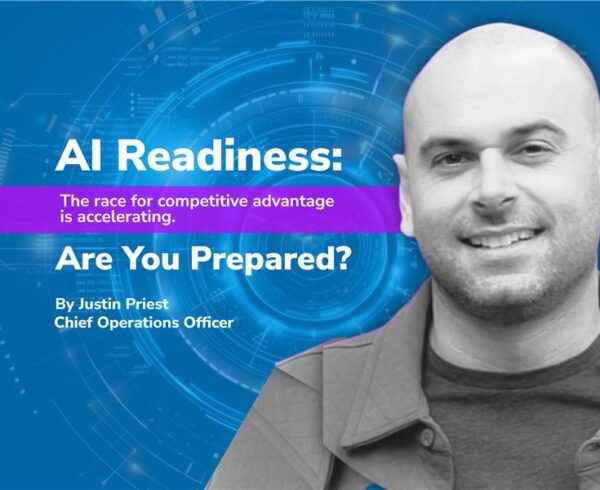Rushed AI tools and standalone apps are failing at alarming rates, not because the technology isn’t advanced enough, but because they weren’t built collaboratively. Too often, solutions are developed in silos: engineers build without design insight, designers create without understanding technical realities, and analysts work apart from the subject matter experts who live with the problem every day. The result? Tools that are polished but impractical, technically sound but unused, or innovative in theory but unadoptable in practice.
The most successful modern applications are built by agile pods—small, cross-functional teams made up of UX designers, engineers, business analysts, and subject matter experts working together from day one. These pods combine technical skill, human-centered design, operational reality, and business insight in a way that eliminates the costly back-and-forth of sequential handoffs. When everyone contributes from the start, you end up with tools that are both highly functional and widely embraced.
WHY AGILE PODS OUTPERFORM TRADITIONAL TEAMS
Traditional development follows a relay race model: requirements are gathered, designs are created, code is written, and the product is handed off to users, often with little overlap between stages. That separation creates blind spots. A designer might create an elegant interface that engineers can’t integrate without blowing the budget. Engineers might build features that don’t align with how people actually work. Analysts might focus on metrics that don’t match the organization’s real priorities. And without SME involvement early on, teams risk solving problems that don’t actually exist.
Agile pods solve this by collapsing those silos. Designers work alongside engineers to ensure usability doesn’t get sacrificed for technical feasibility. Analysts guide decisions with real performance data. SMEs inject operational knowledge into every conversation, ensuring features address real workflows. Because all perspectives are present from the first requirements session, every decision is informed by user experience, technical realities, and business outcomes all at the same time.
A CLIENT STORY: FROM STANDALONE COMPLIANCE TRACKER TO INTEGRATED RISK MANAGEMENT
One client came to us convinced they needed a new compliance tracking app. Their existing system of tangled spreadsheets, email chains, and static dashboards was slowing down audits and leaving gaps in reporting. The request seemed simple: “We want an app where our compliance team can log, track, and report issues.”
In a traditional approach, the team might have scoped the build around that exact request, delivered a sleek new tool, and called it a win. But by forming an agile pod from the start, the conversation quickly uncovered a deeper problem: compliance wasn’t the real pain point, risk visibility was. The compliance logs were just one part of a bigger workflow that also involved risk assessment, remediation tracking, and reporting across multiple departments.
WEEK 1 – REDEFINING THE PROBLEM
With designers, engineers, analysts, and SMEs in the same room, it became clear that a standalone compliance tracker would only shift the bottleneck. The pod reframed the project as building an integrated risk management system that could centralize compliance data, connect it with related risk activities, and give leadership a real-time view of exposure.
WEEK 2 – MAPPING TECHNICAL REALITIES
Engineers identified that key data lived across four different systems: the existing compliance database, a project management tool, an HR platform, and a custom reporting engine. Integrations would be essential, and real-time syncing was non-negotiable.
WEEK 3 – UNDERSTANDING THE WORKFLOW
The UX designer shadowed compliance officers, risk managers, and department leads. They discovered that every compliance issue triggered a predictable chain of actions, risk evaluation, assignment of mitigation steps, follow-up checks, and final resolution, yet no system pulled all those steps together in one place.
WEEK 4 – PROTOTYPING THE RIGHT SOLUTION
Instead of delivering a single-purpose compliance tracker, the pod built a system that:
-
- Pulled compliance and risk data from all existing tools in real time.
-
- Mapped each issue to its related mitigation steps and deadlines.
-
- Offered a visual dashboard for leadership to monitor risk exposure across the organization.
-
- Integrated with existing reporting workflows so nothing had to be re-entered manually.
THE RESULTS
Within the first month of launch:
-
- Audit preparation time dropped by 50% because all records were centralized.
-
- Risk resolution times improved by 35% thanks to automated reminders and linked workflows.
-
- Leadership gained immediate insight into where compliance gaps were turning into high-priority risks.
-
- The compliance team’s adoption rate was near 100% because the tool fit seamlessly into how they already worked.
THE BIGGER PICTURE: WHY AGILE PODS PREVENT APPLICATION FAILURE
Whether it’s an AI tool or a custom app, building in isolation almost guarantees avoidable mistakes. Requirements gathered without user input often miss the real issues. Technical builds end up underused because they don’t fit into daily workflows. Design choices can overlook the realities of integration costs. And AI models deployed without feedback loops never improve accuracy.
Agile pods prevent these failures by embedding designers, engineers, analysts, and SMEs together from the first conversation. Designers ensure solutions work for the people using them. Engineers raise integration and scalability considerations early. Analysts keep the focus on the right business metrics. SMEs anchor every feature to actual operational needs. With this mix in place from the start, decisions are balanced across user experience, technical feasibility, and business value so nothing gets lost in translation.
THE TAKEAWAY FOR IT LEADERS
The most successful applications aren’t just well-coded, they’re well-composed. That starts with structuring projects around the business challenge instead of a predetermined technology. Keep pods small with four to six contributors with diverse expertise move faster than large, fragmented teams. Treat SMEs as co-creators rather than late-stage reviewers so their insight shapes the build, not just critiques it. Bake iteration into the timeline and budget to allow for continuous improvement. And when a critical skill is missing internally, partner for specialized talent so quality never suffers.
As technology cycles accelerate and low-code tools make it easy to spin up apps quickly, the gap between “built fast” and “built to last” is widening. Agile pods close that gap—ensuring the tools you launch aren’t just functional on day one, but remain relevant, adopted, and impactful over time.






